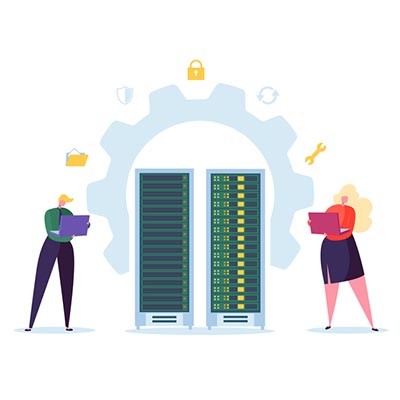There are a lot of benefits of moving your business to the cloud. Typically, we promote the reduction in capital expenditures, the 24/7 availability, and all the other features you can gain. The cloud is a useful tool for all types of business computing functions. Today, large sections are moving their business to the cloud, but is it really right for you? Let’s look at how cloud computing can potentially be detrimental for your business.
PCSOFT Blog
In order to function properly, the modern business needs data. With the predictions of serious cyberattacks, like ransomware, that have been made for the coming year there is no business that can neglect its data protections. Here, we’ll discuss what these predictions are, and what you need to do to prepare.
Properly handling cybersecurity is extremely important for individuals and businesses, alike, but if you are an organization that has to meet external compliance mandates, it could be a major cost for a business that has a tendency be a target for nefarious outside entities. How many times can businesses get hacked before they take network security seriously? The answer is usually one. Prior to their first hack, most small businesses implore a “we’re too small to worry about it” strategy, but after (if there is an after), security is a major priority.
All businesses need to be as efficient with their resources as possible. You might be surprised by the difference you can make simply by using your data more effectively. Stronger data management platforms, or DMPs, can put you in a better position to understand your organization’s needs, including its market and its customers. It’s time to look at how a DMP can make your business more effective and resource-efficient.
Chances are that you, like most business owners, have assembled your staff very carefully, looking for people who are the best-in-class, willing to work their hardest for the good of the company. However, this staff will be made up of humans, and will therefore make mistakes. As such, you need to make sure that your data is managed in a way that keeps it safe.
Is your business prepared to deal with network downtime? By this, we mean any situation when your organization’s network infrastructure isn’t operating as intended. Maybe you’ve lost power in your office, or you’ve experienced a data loss incident that keeps you from accessing crucial information. To prepare your SMB for times like this, you need to ask if your organization can handle such a wasteful occurrence.
The cloud is changing the way that businesses keep track of their data, deploy applications, and access hardware like servers, desktops, and even networks. Yet, despite the massive benefits that the cloud and virtualization bring to the table, many organizations are still reluctant to make such a dramatic change to their infrastructure. Therefore, we’re here to make the cloud less scary of an investment for SMBs.
Defining Cloud Computing
Cloud computing is when a business stores information in an online environment. You can think of the cloud as a computer (or a series of computers) that’s managed and maintained by an external party, like a managed service provider. Your business hosts its data on this computer, and you access it via the Internet. It makes for a convenient and easy way to access your data, and the best part of cloud computing is that you don’t have to worry about upkeep. When it’s hosted by PCSOFT, we give it the same care and attention that we would provide to our own technology, so you know with certainty that it’s being taken care of to the best of our ability. Many organizations use the cloud to store their productivity suite, like Google Apps or Microsoft Office 365, and to store data that many employees need to access.
Defining Virtualization
Virtualization is the act of taking multiple pieces of your network, like a server, or a desktop, and running them virtually on a single piece of hardware. Doing so allows your business to eliminate the physical costs of running and maintaining multiple, and underutilized devices, and as such, it can be a great way to decrease overhead costs. Your organization can save a considerable amount of revenue through virtualization, which can be better invested in other parts of your business. Plus, virtualizing your network offers the opportunity to remove the physical components, which frees up plenty of room in the office for storage or other equipment.
One real-world example of virtualization is seen when a user’s desktop is deployed from a centralized or hosted server. Essentially, this allows the user to broadcast their desktop to any type of hardware, like a laptop, thin client desktop, a home PC, tablet, etc. This virtualization process provides users access to the files and applications they need, without running into the limitations of a computing device.
How are Virtualization and Cloud Computing Related?
The most dynamic way that cloud computing and virtualization are related comes by way of cost savings. Essentially, by entrusting your data to a virtualized infrastructure, you’re gaining access to high-end computing hardware, and when you go with a cloud provider, you gain the ability to provide needed computing resources for more users per capita, for less. Additionally, cloud computing provides a level of remote monitoring and maintenance that is difficult and expensive to achieve with an in-house team.
Managing and maintaining your business’s data shouldn’t have to be a struggle. If your in-house team isn’t fully invested in spending the time to know and understand your technology solutions, or they simply don’t have the time to give it the care that it needs, you could benefit from having an outsourced IT company like PCSOFT around to pick up the slack. With managed IT at your disposal, you can free up your team to handle new initiatives while knowing that your technology is being cared for by professional technicians.
Our technicians have the skills required to help you choose and implement any type of cloud solution for your business. Furthermore, once you’ve already migrated to the cloud, management and maintenance becomes easier than ever before. Instead of updating each individual workstation or server, we can handle it all in one fell swoop. This makes cloud computing and virtualization crucial processes toward maximizing your bottom line and income potential.
 Now that the cloud has become an affordable and versatile part of the business environment, more organizations than ever are moving to take advantage of it as much as possible. However, for the folks who are new to cloud computing, you might want to hold your horses and take a look at how you can prepare to move your business to the cloud. Doing so can alleviate some of the challenges that come from overhauling your IT infrastructure.
Now that the cloud has become an affordable and versatile part of the business environment, more organizations than ever are moving to take advantage of it as much as possible. However, for the folks who are new to cloud computing, you might want to hold your horses and take a look at how you can prepare to move your business to the cloud. Doing so can alleviate some of the challenges that come from overhauling your IT infrastructure.









